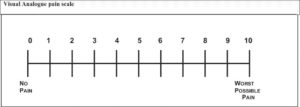Have you ever thought you could be both a great documenter and repeatedly educate your patients on their innate intelligence . . . if you only had the time? Keep reading on how to both bulletproof your documentation for a potential audit and maintain the energy of our profession’s principles.
Let’s help build your ammunition.
First . . . did you know that the US Health and Human Services advised Medicare to target chiropractors to curb questionable and inappropriate payments, projected at $280,000,000? Seriously! And clinics are, as I write this, being audited. How do I know? Because we’re receiving phone calls and emails asking, “What do I do? I received a letter from Medicare.” As a result, I’m traveling around to help chiropractic offices prepare.
To insure yourself and what you’ve worked hard for, make sure your documentation (that is, every single note in the patient’s file/your EHR software) is citing the following information:
- History Obtained at Initial Visit:
- Symptom(s) causing patient to seek care
- Family history if relevant
- Past health history (general health, prior illness, injuries, hospitalizations, surgeries, current medications)
- Mechanism of trauma
- Quality and character of symptoms/problem
- Onset, duration, intensity, frequency, location, radiation of symptoms
- Aggravating or relieving factors
- Prior interventions, treatments, medications, secondary complaints
- Initial Visit or New Onset
- History (as stated above)
- Description of the present illness:
- Mechanism of trauma (how did it happen?) For example, getting out of bed, twisting, gardening.
- Quality and character of symptoms/problem
- Onset, duration, intensity, frequency, location, radiation of symptoms
- Aggravating or relieving factors,
- Prior interventions, treatments, medications, secondary complaints
- Symptoms causing patient to seek care. Symptom(s) must be related to the level of the subluxation documented.
- Evaluation of spine/nervous system through physical examination.
- PART: pain and tenderness, asymmetry/misalignment, range of motion abnormality, tissue, tone changes
- Diagnosis: Primary diagnosis must be a subluxation, including the level or identified descriptive term of location, i.e., condition of the spinal joint involved, direction of position assumed by the named bone.
- Treatment plan, to include the following:
- Recommended level of care (duration and frequency of visits), specific goals, objective measures to evaluate treatment effectiveness, date of the initial treatment.
- Though not a documentation requirement, this is where you will educate the patient face to face, as to their subluxation and what will happen if they don’t get it corrected, as well as educate them on their innate intelligence.
- Subsequent Visits:
- Review of chief complaint, changes since last visit, systems review if relevant
- Physical Exam
- Exam – area of spine involved in diagnosis
- Assessment of change in patient condition since last visit
- Evaluation of treatment effectiveness.
- Though not a documentation requirement, this is a perfect time to re-educate the patient on chiropractic principles.
- Documentation of the presence or absence of a subluxation
- PART: pain and tenderness, asymmetry/misalignment, range of motion abnormality, tissue, tone changes
- Documentation of treatment given on day of visit (technique(s) used and areas adjusted)
- Progress or lack thereof, related to goals and treatment plan (is the patient meeting goals?)
Let me be clear: The above documentation requirements are not PM&A’s. They are Medicare’s.
Other Tips:
- Your subjective findings in initial visits/new onsets should tell a story about what happened, how it happened, and when it happened.
- The Visual Analog Scale (VAS) is not sufficient documentation as your sole objective tool. Use additional tools to measure objectives findings.
- See below for a typical VAS:
- You should self-audit your documentation on a regular basis.
In closing, get out there, do what you do best to attract and help anyone with a spine, and follow the above documentation requirements to armor yourself in the event of an audit by Medicare and other payers. Need help staying relaxed and focused, and getting paid? Give us a call. That’s why we’re here.
Sincerely in Chiropractic,
Lisa
Lisa is now providing a no charge initial consultation regarding your Medicare documentation. You can contact at (920) 334-4561 or by email at Lisa (at) @ pmaworks.com
More information on Lisa[LINK]
Download a printable copy of this newsletter [June newsletter]
Download a customizable copy of the Checklist: [Medicare Documentation ChecklistDOC]
Print Checklist (PDF)[Medicare Documentation Checklist-PDF]


